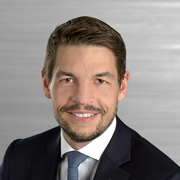CGS UPDATE – the CGS Journal
>>> Integration
More than the individual parts
Marc Trippel, Investment Director
Forming industrial groups is about acquiring and developing individual companies, as the term Buy & Build says. Both factors of this strategy are key, but the latter is decisive. Bringing independent companies together to form a group that is more than the sum of its parts is an art. The Top-Werk Group is a topical example.
With a turnover of EUR 230 million, the Top-Werk Group is the undisputed leader of the market for the construction of machines and systems that manufacture concrete parts. The group was created in 2013 from the companies SR Schindler and Prinzing Pfeiffer with a EUR 30 million turnover.
The acquisition of Hess completed the group's product range and allowed it to focus clearly on sales and market development, thereby also making cross-selling among the companies possible. Masa joined the group in 2014 with its product portfolio that largely covers the same areas as Hess's. It was brought into the group during a multi-year integration period with a clear two-brand strategy.
Formed into a single-source supplier
The individual companies have established excellent reputations and oustanding positions in their areas thanks to decades of technological leadership and global operations. Using a targeted Buy & Build approach, CGS brought them together to form the Top-Werk Group, a single-source supplier. The strategic goals defined in 2013 still apply today, unchanged: establishing a comprehensive industrial product portfolio for all concrete products from a single source, achieving global presence with strong “Made in Germany” brands, and using synergies and economies of scale, especially in sales, development, and the centralization of support functions.
Clear goals, transparent strategy
Pursued consistently over years, clear goals and a transparent strategy are essential success factors for integrating companies. Just as important is respecting and preserving their history and identity while jointly aligning operations to market demands and customers’ needs. As the backbone of every company, the employees must be engaged and involved in this process. Time plays a major role here; planners often significantly underestimate how long a successful integration operation will take.
Steadily growing closer together
The carefully conducted integration of the Top-Werk Group’s companies has led to a very positive work climate among the employees. The cooperation among the companies is deepening steadily and also includes the development of new machines. Clustering resources – especially in research and development – creates the kinds of new opportunities that are only possible in groups.

The Top-Werk Group: an example of a carefully planned and successful integration.
